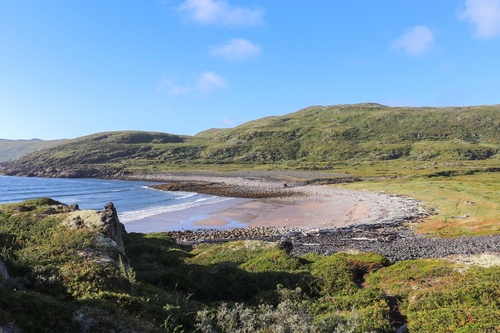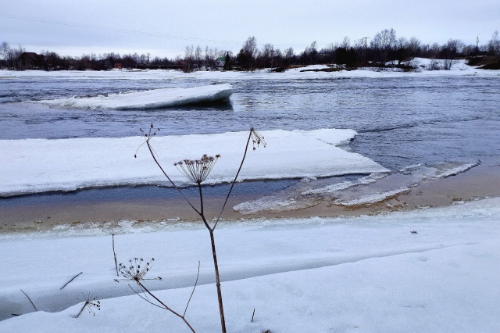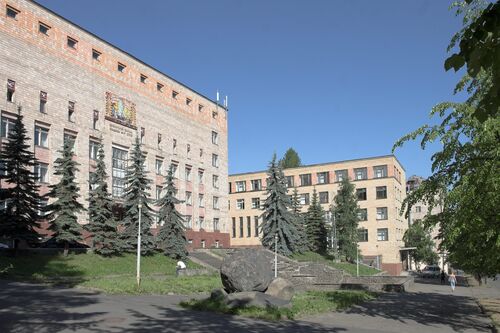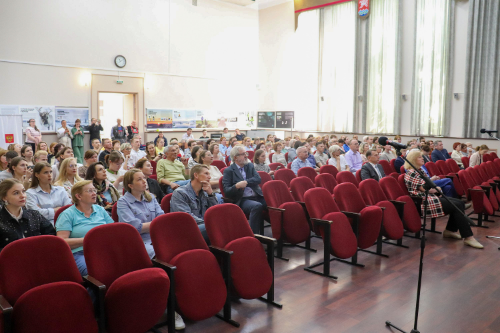Thus, using the new methodology, scientists assessed the tourism opportunities for the population of the Russian Arctic regions in their permanent residence areas and beyond. To this end, they applied indicators grouped into four main blocks: socio-economic indicators, transport infrastructure, accommodation infrastructure, and leisure and entertainment infrastructure. The situation in nine Arctic regions of Russia was analyzed.
– The study revealed a significant gap between the Arctic regions in the economic and social indicators of the population, transport connectivity and the levels of accommodation, leisure and entertainment infrastructure. Thus, we can talk of limited tourism opportunities for residents of these regions of the country, – noted Svetlana Kondratyeva, Project Leader, Senior Researcher, Institute of Economics KarRC RAS.
Economists argue that the most difficult situation is found in the Nenets Autonomous Okrug, and is only slightly better in the Republic of Yakutia. The Murmansk Region and the Republic of Karelia are the most “touristy” among the Arctic regions owing to the leisure and entertainment infrastructure, as well as high transport accessibility. These factors could provide vacation opportunities both inside and outside the region, including abroad, but poor socio-economic performance imposes limitations.

Svetlana Kondratyeva, Project Leader, Senior Researcher, Institute of Economics KarRC RAS
According to the results of the study, Krasnoyarsk Krai can also be included in the group of Arctic regions doing well in the tourism sphere. It has a well-developed tourist infrastructure and average economic and social performance indicators. At the same time, the extremely poor transportation options limit the possibilities for its population to have recreation inside and outside the region. The high socio-economic potential of the population for tourism in the Yamalo-Nenets and Chukotka Autonomous Okrugs cannot be realized within the regions and the transport connection challenges make it problematic to travel outside the regions.
The results of the study were published in the Regionology Journal. They demonstrate the need for comprehensive development of the Arctic regions. It is necessary to increase people's income, develop the transport infrastructure, especially to build new roads, airports and heliports, to make the territories attractive to tourists.
On the other hand, the analysis demonstrated the high potential of special tourism development measures for certain areas. To wit, a promising option in the Murmansk Region and Karelia is to build campsites enabling low-cost recreation, which, due to the ramified road network and availability of sights of interest, may be in demand, also among local residents with low incomes. In the Arkhangelsk Region and Krasnoyarsk Krai, transportation services should be provided using passable vehicles. An option with high promise for the Komi Republic is event tourism. Finally, the Yamalo-Nenets Autonomous Okrug and Chukotka would benefit from the development of adventure and sports tourism.
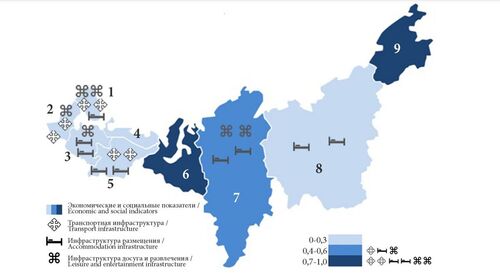
Schematic map of tourism opportunities for residents of Arctic regions of Russia. The numbers indicate: 1 - Murmansk Region, 2 - Republic of Karelia, 3 - Arkhangelsk Region excluding the autonomous district, 4 - Nenets Autonomous District, 5 - Komi Republic, 6 - Yamalo-Nenets Autonomous District, 7 - Krasnoyarsk Krai, 8 - Republic of Sakha (Yakutia), 9 - Chukotka Autonomous District.
Within this study experts have also analyzed the documents establishing the regulatory framework for tourism development in the Arctic and evaluated how much the regional strategic priorities align with the federal agenda. The scientists have also studied the lessons from the international tourism-related projects implemented in the Russian Arctic zone in 2001–2024.
The project duration is two years. In 2024, the researchers conducted three focus group surveys and about 30 interviews with representatives of relevant departments of regional and municipal authorities, tourist information centers, tourism companies, protected areas, cultural institutions and NGOs. The database “Indicators of Tourism Systems Development in the Arctic Zone of the Russian Federation: Municipal Level” was compiled and registered.
Next, the experts plan to study the specific features of tourism development in the Arctic and the tourism opportunities of its inhabitants in the municipal dimension. Based on the results, recommendations will be developed for regional authorities, businesses and the not-for-profit sector. Their implementation will help to make Arctic destinations more competitive on the international and Russian market of tourist services and improve the quality of life of the local population.




